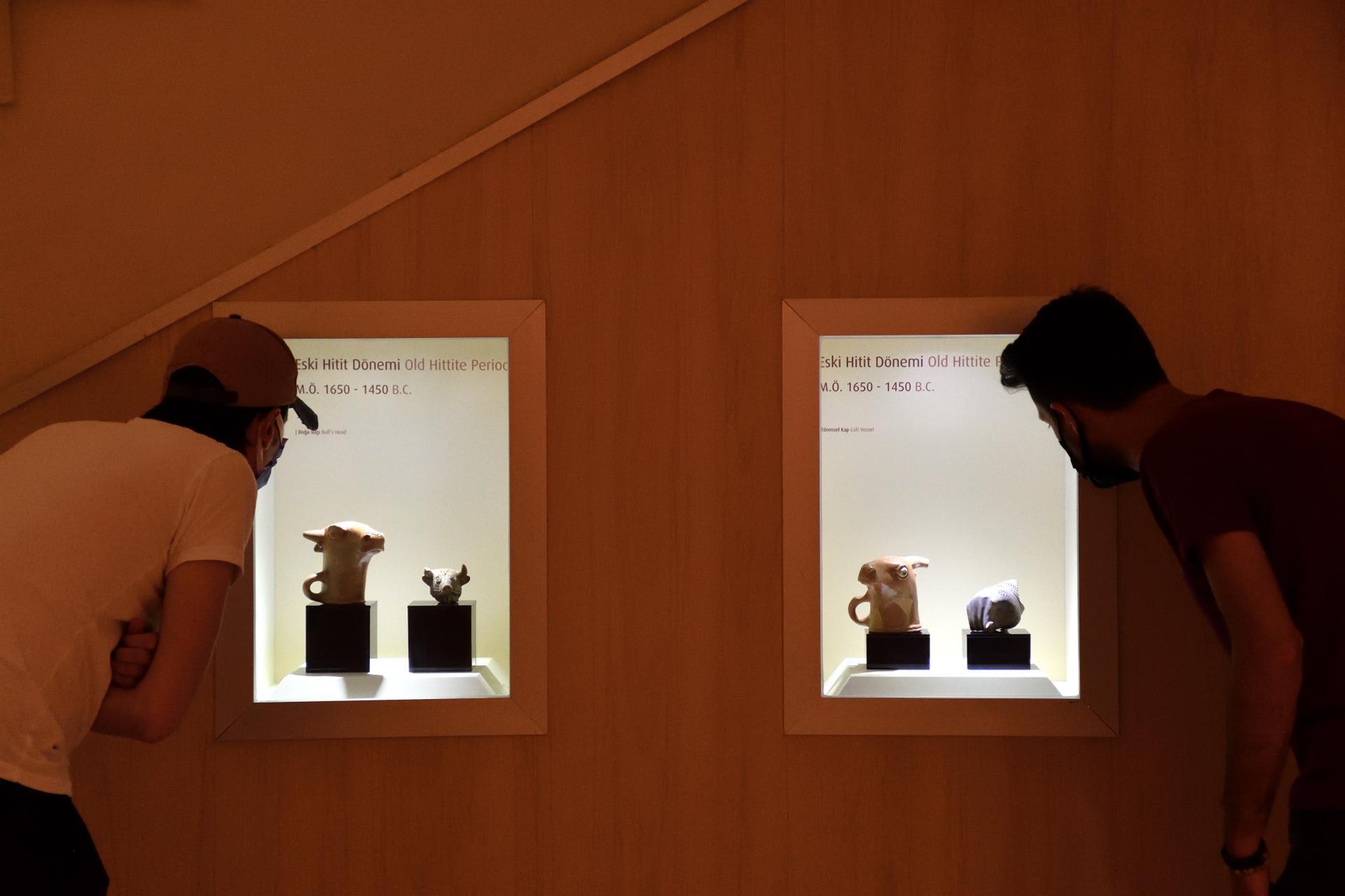
Considered a “unique” work by the archaeology world, a 3,600-year-old fist-shaped drinking bowl is one of the three ancient drinking bowls discovered over the years in the archaeological excavations in Hattusha, the capital of the Hittite Civilization.
Drinking bowls in the shape of bulls, goats and fists unearthed during the excavations carried out by the German Archaeological Institute at the Hattusa Ruins adorn the Boğazkale Muse-um in the Central Anatolian province of Çorum.
Speaking to the state-run Anadolu Agency, Professor Andreas Schachner, the head of the Boğazköy Hattusha excavations, said that during the excavations six years ago, they un-earthed drinking bowls in the form of bulls, goats and fists.
Pointing out that all three drinking bowls are important from an archaeological point of view, Schachner said that the fist-shaped bowl, in particular, was defined as a “unique artifact” because of both the material used and its ability to remain under the ground for thousands of years.
“During the excavations, we found three significant artifacts in the form of a bull, a goat and a fist. The most interesting of these is the fist-shaped drinking bowl as the material from which it is made of is a very rare, gray ceramic,” he said.
Noting that a similar fist-shaped drinking bowl made of silver is on display in a museum in the United States, Schachner said: “A drinking bowl in the shape of a human fist has yet to be found in legal excavations in Anatolia, except in Boğazkale. There is a similar one made of silver, which was smuggled abroad. It is not known where it was found exactly. It is currently exhibited in a museum in the U.S.”
“Thanks to this bowl we found in Boğazkale, we learned how these artifacts were used and where they were used, as the smuggled artifacts lose their environment and cannot reveal much. Therefore, the fist-shaped drinking bowl is a ‘unique’ artifact,” he added.
Emphasizing that the fist-shaped drinking bowl was found in almost intact condition, Schachner said: “This artifact was found on the floor of a building built in the 1600s B.C. It was most likely found in the period in which it was used. In this way, it was found with almost no damage. There is a missing part, but we couldn’t find it. Therefore, there was no restoration process for this bowl. It was just washed, cleaned and handed over to the Boğazkale Museum at the end of the excavation season.”
“In our opinion, this building was a place where great rituals and cult activities were held during the Hittite period. We think that it is an artifact used as a drinking bowl by the notables or high-level administrators of the Hittites during rituals, as the Hittites had a phrase called ‘drinking the god.’ This was something done in rituals. The elite of the Hittites, perhaps the priests, drank in such glasses,” he added.